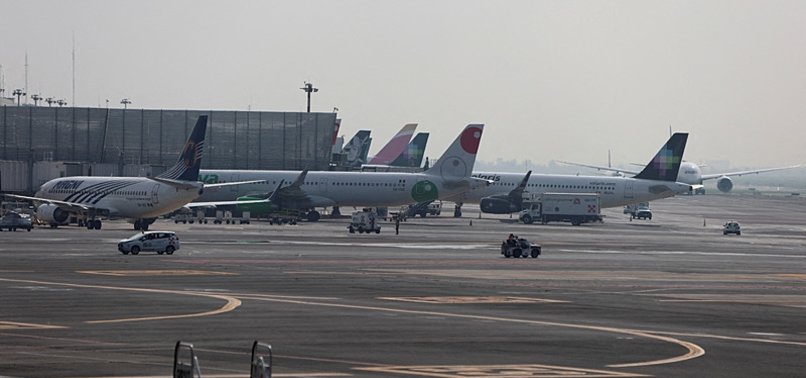Mexico City’s Benito Juarez International Airport was forced to suspend all flight operations for several hours on Sunday evening after torrential rains battered the capital, flooding runways and reducing visibility to dangerous levels.
The airport one of Latin America’s busiest, handling 45.4 million passengers in 2024 announced on its official X account that the aeronautical authority had ordered the halt of all landings and takeoffs shortly before 9:00 pm local time (0300 GMT). The suspension was set for three hours to allow crews to drain rainwater and restore safe operational conditions.
The downpour, part of Mexico’s annual rainy season that runs from May to November, caused significant disruption across the capital. In several districts, floodwaters reached up to 50 centimeters (19 inches), making major roads impassable and stranding motorists. City officials activated a purple alert the highest warning level for the central area of Mexico City, which is home to over nine million residents.
Authorities mobilized emergency teams to clear drainage systems and assist residents in affected neighborhoods. Public transportation faced delays, and some subway stations experienced partial flooding. The National Meteorological Service had warned of heavy rains and possible thunderstorms over the weekend, but the intensity of Sunday’s storm caught many commuters and travelers off guard.
Severe weather events are a recurring challenge for Mexico. Just this June, Hurricane Erick struck the country’s southern Pacific coast, killing two people and devastating local communities. Last year was particularly destructive, with Hurricane John claiming about 15 lives in September and Hurricane Otis, a powerful Category 5 storm, hitting Acapulco in October, killing dozens and causing extensive damage to infrastructure and tourism.
While Sunday’s flooding was not linked to a tropical cyclone, experts note that climate change is intensifying rainfall patterns in the region, increasing the likelihood of flash floods and urban disruption.
By late Sunday night, airport authorities confirmed that operations were gradually resuming after water removal efforts succeeded. However, delays and rescheduling continued into Monday morning as airlines worked to accommodate stranded passengers.
The incident serves as another reminder of Mexico City’s vulnerability to extreme weather and the urgent need for improved drainage infrastructure to protect its residents and maintain critical transport links.

